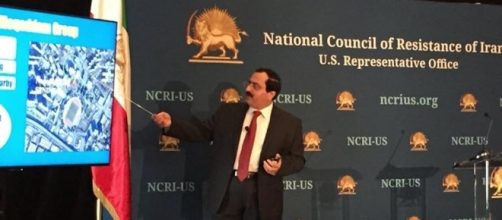When the Joint Comprehensive Plan of Action JCPOA was agreed to, the primary objective was to keep iran from achieving its nuclear ambitions, or at least to slow down the process. During the negotiations, everything else was essentially ignored, including the iranian regime’s horrible record of human rights abuses and the oppressive measures used to stamp out any form of political resistance.
During the negotiation, Iran stood firm that it would not allow its military facilities to be inspected by the #IAEA (International Atomic Energy Agency). While the areas that were open for inspection may have kept to the amounts of nuclear material required by the agreement, others in the international community argue that these military sites could be holding much more material, giving the regime the ability to continue working toward a nuclear weapon.
One of the key issues is that the verification process is essentially incomplete. The United States Ambassador to the United Nations, Nikki Haley, said on September 5, “For decades, the Iranian military conducted a covert #nuclear weapons program, undeclared and hidden from international inspectors. In 2002, Iranian dissidents revealed the existence of a uranium enrichment plant and heavy water reactor – both violations of Iran’s safeguards agreement with the IAEA.”
Haley also noted that the existence of a hidden enrichment plant, which was hidden inside an IRGC (Islamic Revolutionary Guard Corps) base. One of Haley’s concerns “is that Iranian leaders – the same ones who in the past were caught operating a covert nuclear program at military sites – have stated publicly that they will refuse to allow IAEA inspections of their military sites.”
IAEA respond
The head of the IAEA, Yukiya Amano, has stressed that under the current monitoring conditions accepted by Iran, his agency does have access to all locations without making any distinction between military and civilian locations.
However, the Iranian regime and its highest officials have consistently refused to allow access to their military sites.
Those who have nothing to hide, hide nothing. Yet, by their actions, the regime has indicated that they do have something to hide. In their latest report, Iran’s Nuclear Core, Uninspected Military Sites Vital to the Nuclear Weapons Program, the National Council of Resistance of Iran (NCRI) has clearly defined the two nuclear programs of Iran, noting that no access to the military sites should be a huge red flag.
“The military sector has gone through changes in name, location, and reorganizations over the years. However, it has never halted its work, and key figures in the sector have remained unchanged,” said the NCRI report.
“To control information and prevent leaks, in addition to making use of past experience, specific companies affiliated with or belonging to the IRGC or the Defense Ministry have carried out the construction of the sites involved in the nuclear project.”
These complexes are built to be a maze, making it easier to hide their activities, while at the same time, keep the IAEA from inspecting them. These designs allow the relocation of these centres and projects to other areas of the complex fairly quickly. Thus, pinpointing the exact location of their nuclear research more challenging for international monitoring bodies.
The Iranian civilian sector provided a plausible cover for their activities, in part due to the nuclear energy projects at their universities.
Resources and research can be used, while at the same time, training is taking place of individuals necessary to continue this nuclear research.
One way that the IRGC is able to hide this type of training is through its support of various universities, thus providing a natural bridge between the military and civilian programs. Some entities at the highest levels of the Iranian regime, including offices and centres affiliated with the President’s office, have been involved in smuggling or skirting sanctions to obtain illicit or dual-purpose equipment for these projects, according to the NCRI’s report.
Iranian resistance investigation
The most recent investigation by the Iranian Resistance revealed that METFAZ has transferred its main activities to another location, which was secret until the spring of 2017.
New intelligence has revealed the existence of a new location, which is identified in SPND’s internal communications with the codename “Research Academy” or “Research”. This location has become the main centre for METFAZ’s tests and other activities.
What this all means is that the U.S. and its partners have signed a deal with an unreliable party. The regime is not going to give up their nuclear ambitions but instead will continue to use a game of cat and mouse to hide their activities. The regime needs to continue its nuclear activities to maintain its level of power and control within the borders of #Iran, as well as its influence throughout the region.
While the regime will pretend to go along with the demands of the international community, the reality is that they will use loopholes and stalling tactics to keep from giving up what they value most, which is control over their nuclear program and its ambitions to dominate the region.


